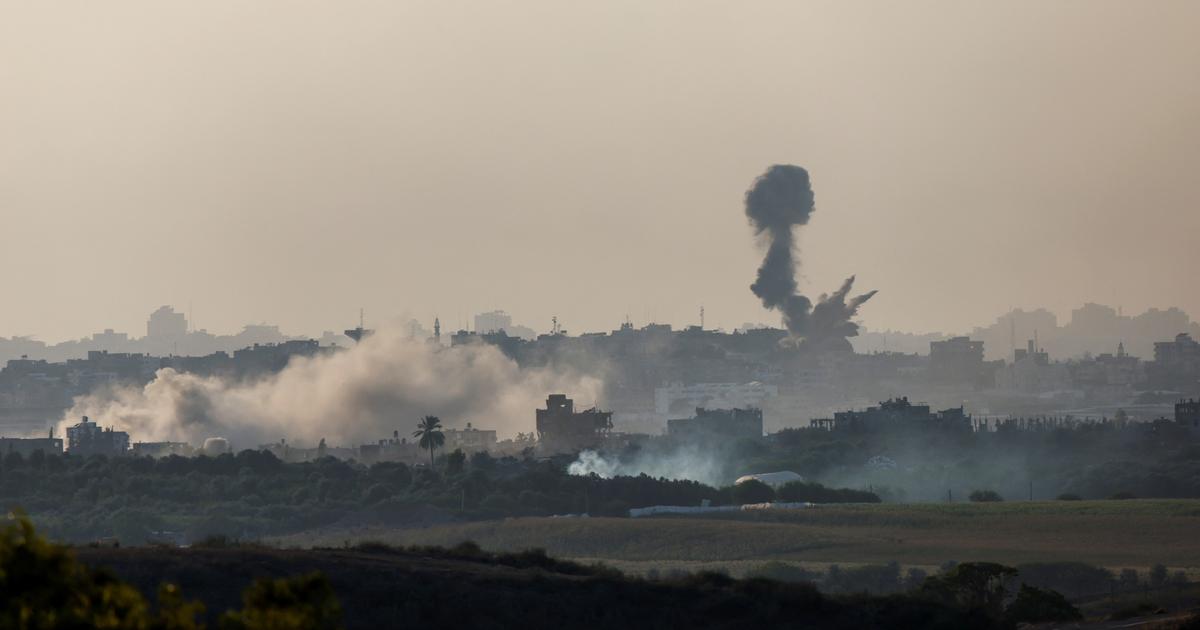It is difficult to report on a conflict when the combat zone is hermetically sealed. Since Israel launched its intense bombing campaign in the Gaza Strip in retaliation for Hamas raids, journalists of all nationalities have been kept away from the enclave. Forced to report from the border villages. And the situation has not improved with the launch of the second phase of the operation. Nevertheless, it is possible, thanks to OSINT (open-source intelligence data), the few reporters present on the ground and the communication of the Israeli army, to analyze the IDF's ongoing maneuvers.
To discover
- Download the Le Figaro app: the news at the heart of your day
On 26 and 27 October, the Israel Defense Forces (IDF) launched lightning incursions into the Gaza Strip. "Probes" carried out by special forces units and tanks, to "see how to articulate its armed forces", General Chauvancy told Le Figaro, and to prepare for the offensive. On the evening of Saturday, October 28, Israel picked up the pace, moving "to the next phase," IDF Chief of Staff Herzi Halevi said. "Our forces on the ground are conducting a complex and important operation," he added.
Read alsoGaza: Israel launches the second phase of its offensive
Three axes of penetration, Gaza City in the line of fire
The IDF entered the Gaza Strip on three axes: from the north along the Mediterranean and at the Erez checkpoint, and from the east, thus partially encircling Gaza City. According to testimonies on the ground, Israeli tanks were already on the outskirts of the city. Some of them were spotted on the Salah ad-Din road, the main road in the Gaza Strip. Videos posted on social media also show armored and infantry units moving near two towns in southern Gaza, believed to be Beit Hanoun or Beit Lahia.
Cautious Advance
This powerful step forward is nevertheless cautious. This is not yet the "massive" attack promised by Israel to "eradicate" Hamas. Because the IDF cannot afford to move too fast. "In the art of war, you never fight where the enemy is waiting for you," military historian Guillaume Ancel recently told RTL. Hamas attacked Israel knowing full well that it would retaliate with a ground operation. The terrorist group therefore had to anticipate, and stands ready to receive the IDF. The terrain must be mined and crisscrossed by snipers. Hamas fighters are presumably holed up in every alley, every building, and even in every basement.
Read alsoFrom a small faction to a formidable militia, how Hamas has metamorphosed
The IDF's current maneuvers are therefore likely aimed at preparing the ground for a denser assault, securing certain locations and defusing possible booby traps. According to Kobi Michael, a researcher at the National Institute for Strategic Studies, a think-tank linked to Tel Aviv University, interviewed by our correspondent in Jerusalem, this phase of the war "consists of gathering information on the ground, and preparing the combat zone for the third phase: a massive incursion." According to him, it would also create "new corridors" to allow the entry of troops, while avoiding existing roads, which could be booby-trapped.
Locating the hostages and putting pressure on Hamas
This caution and meticulousness can also be explained by the presence of the 240 hostages, still in the hands of Hamas. This crucial variable probably prevents the IDF from demonstrating its full power. But the current manoeuvres allow him to obtain information on their whereabouts. And this method seems to be bearing fruit, since the Israeli army announced on Monday that a soldier held by Hamas had been freed on the night of Sunday to Monday, "during a ground operation".
Read alsoHostages: Israel's dilemma in its war against Hamas
Paradoxically, the IDF could also try to create the conditions for the release of hostages. These limited operations look like a way to increase pressure on Hamas, as negotiations apparently began over the weekend. On Saturday, Hamas said it was ready to release the kidnapped Israeli hostages in exchange for the release of all Palestinians held in Israel. For the time being, the idea has simply been "discussed" within the Israeli government, which has refrained from making an official statement on the issue.

